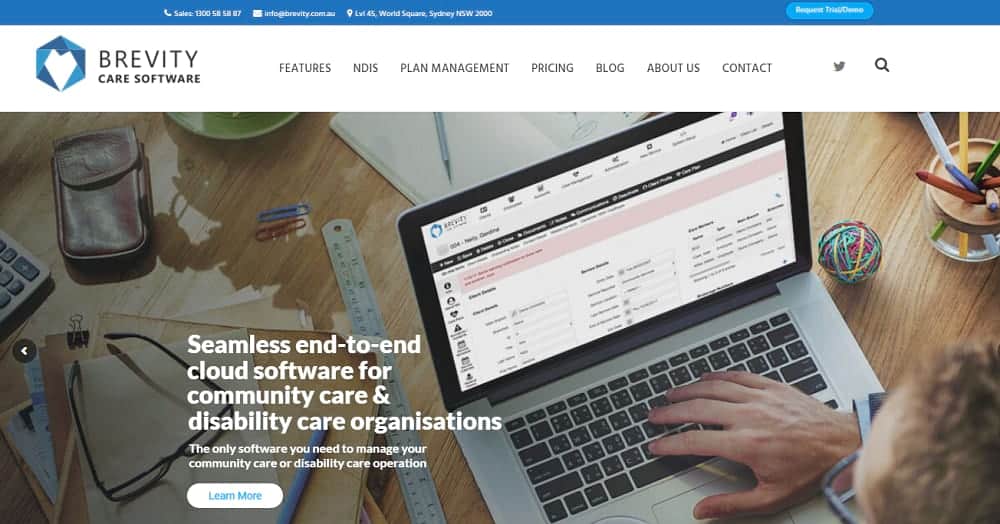
Consent can be a tricky subject, especially when it comes to people living with a disability freely giving their permission for something.
The NDIS (National Disability Insurance Scheme) is no different – NDIS consent forms are essential for service providers to have on hand, in order to ensure they are always working within the NDIS Code of Conduct.
If you’re providing services to NDIS participants, it’s important to understand the ins and outs of NDIS consent forms. Here’s everything you need to know about NDIS consent forms, as well as a template for the 2024 NDIS consent form.
How NDIS consent forms work

The National Disability Insurance Agency (NDIA) requires all NDIS participants to give their consent prior to their information being shared with others as well as to allowing a third party to act on their behalf. This is to ensure that NDIS participants have full control over their NDIS plan and the services they receive.
Both written and verbal consent are acceptable ways for participants to allow service providers to share their NDIS information or to allow other people to carry out tasks on their behalf.
However, it is always best to use a written consent form as doing so provides a clear record of what the participant has consented to and when. Using an NDIS consent form can also help to prevent misunderstandings between the NDIS participant and service provider.
Types of NDIS consent forms
A visit to the NDIS website will supply you with the two different NDIS consent forms you need as an NDIS provider. Alternatively, we have saved you some time by including links to the NDIS consent forms below:
- Consent for the NDIA to share your information form (DOCX 67KB)
- Consent for a third party to act on your behalf form (DOCX 68KB)
As an NDIS provider, it is not required that you use a written consent form. As long as you provide the information the NDIA requires, you can gain NDIS participants’ consent in other ways.
However, not keeping a record of NDIS participants’ consent forms on file can become problematic. This is especially true if an NDIS participant changes their mind about the services they want to receive or who they want to provide them. In these cases, having an NDIS consent form on file can help to resolve any misunderstandings.
NDIS consent must-haves
You do not have to use either of the two NDIS consent forms linked above. If you decide not to use these forms, it’s important to be aware of the must-haves for NDIS participants to give their consent. Here is a list of what the NDIS requires from participants who wish to give their consent:
- The NDIS participant or their authorised representative’s name and signature
- The date the form was signed
- The NDIS participant or their authorised representative’s NDIS number
- Details of what the NDIS participant is consenting to
Please note that the participant can withdraw their consent at any time by informing the NDIA by mail, email, in person, or over the phone.
Why use NDIS consent forms?
While it is not a NDIS requirement that providers use NDIS consent forms, there are several advantages to doing so. These advantages include:
- Better record-keeping (an important aspect of being an NDIS provider!)
- Aids in NDIS participants understanding what they are consenting to
- Helps to prevent misunderstandings between NDIS participants and providers
As can be seen, using NDIS consent forms not only helps providers, but NDIS participants as well. To avoid any confusion and to make sure you’re meeting NDIS requirements, we recommend using an NDIS consent form whenever possible.
Final thoughts
The NDIA places a large emphasis on NDIS participants giving their consent prior to service providers sharing their NDIS information or acting on their behalf. As an NDIS provider, you are tasked with a great responsibility to ensure that NDIS participants understand what they are consenting to. Similarly, you are required to keep immaculate records, especially when it comes to participant information. Not doing so can result in misunderstandings and could lead to an NDIS participant withdrawing their consent.
To make things easier for both you and your NDIS participants, Brevity Care Software provides the right tools to manage client information and steer your NDIS business. From NDIS care planning and progress reports to NDIS timesheets and invoicing, we’ve got you covered.
If you would like to know more about how Brevity can help your NDIS business streamline its processes and unlock its growth potential, why not request a free demo today?




